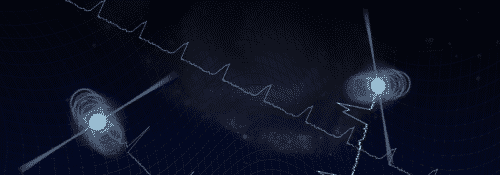
NANOGrav Astronomers Produce First Hints of Gravitational Waves: Hillsdale College Professor, Students on International Team
The signal detected may show gravitational waves from merging supermassive black holes
Hillsdale, Mich. — Hillsdale College Assistant Professor of Physics Tim Dolch and four physics students contributed their research to the detection of a signal that may help to show gravitational waves that are produced by merging supermassive black holes in other galaxies. Announced by NANOGrav at the American Astronomical Society’s national meeting on January 11, the research is touted as an important step in research on the gravitational universe.
“Our Hillsdale College team spent many hours remotely controlling the Green Bank Telescope, sometimes in the middle of the night,” said Dolch. “The data that we gathered and analyzed helped to contribute to this NANOGrav result. This recent report of hints of gravitational waves in the data, although still not verified, is the most exciting result to date. Many teams similar to ours are to credit for this impressive undertaking.”
Gravitational waves are ripples in spacetime. They were first predicted by Einstein’s general relativity theory in 1916. After the 2015 detection of short-period gravitational waves by the Laser Interferometer Gravitational-wave Observatory (LIGO), physicists became even more interested in their direct measurement. The 2017 Nobel Prize in Physics was awarded to that 2015 detection. This research and report builds on that detection.
NANOGrav researchers studied the signals from distant pulsars—small, dense stars that rapidly rotate, emitting beamed radio waves, much like a lighthouse. Pulsars were chosen because they are detectable and dependable, serving as a sort of galactic clock. They are commonly referred to as the universe’s timekeepers. For more information about NANOGrav, click here.
Dolch was joined by Hillsdale graduates Cody Jessup, ’16, Daniel Halmrast, ’17, Joshua Ramette, ’17, and Michael Tripepi, ’17, in the collection, reduction, and analysis of a 15-year dataset from NANOGrav. All five are authors on the two, 12.5-year data release papers published in the January 2021 issue of The Astrophysical Journal Letters. These four students observed for over 20 hours; many other Hillsdale students also participated in the observations.
The research can be found here, here, and here. Click here for photos.